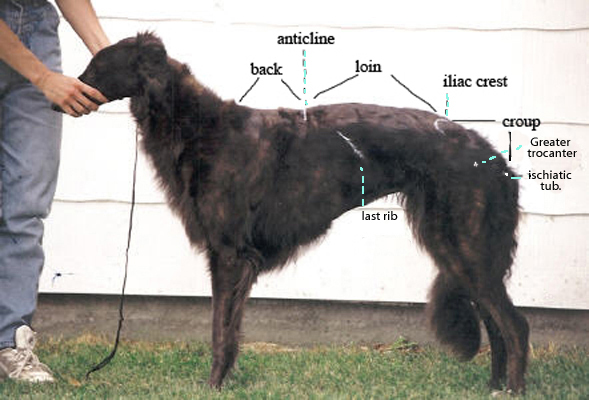
Third Borzoi Speed Study
a visual study of the borzoi back, loin and croup
as presented at the International Borzoi Council Conference October 16, 2014
From 2000 to 2007 data
was collected from over 200 borzoi in Europe and America. This data
measured various anatomical features of borzoi as well as each dog's top speed.
This study is published for your review at
The analysis of this data indicated that the four most important anatomical
contributors to speed are:
comparatively short back to long loin
tight skin
high set ears
rear set behind the pelvis
Of these four traits, tight skin and high set ears are most likely related to the quality of collagen and connective tissue found throughout the dog ; therefore, the tendons connecting the muscles to bones are tighter in the tight skin/high eared dogs and more stretchy in the loose skin/low eared dogs.
The topline features of short back/ long loin and rear set are explored in this third speed study.
Terminology review:

Films:
Ordinary dog:
Fast borzoi:
Borzoi with area of inflexibility near anticline:
Borzoi with C shaped pelvis:
Borzoi from Fastest to Slowest at full speed:
There are similarities in the gallops of all these borzoi. There are two phases of suspension culmination in maximum contraction and extension of the limbs. This "double suspension" at a gallop occurs in all dogs, but is visible with the naked eye in fast dogs - aka true sighthounds. The foot timing is very similar with both front and rear limbs spreading out for maximum effect. Notice also that the carpus (pastern) and meta carpals (hocks) of each borzoi (though rather different standing) look nearly identical at a gallop. Be sure to notice how the rear toes flip up at maximum extension.
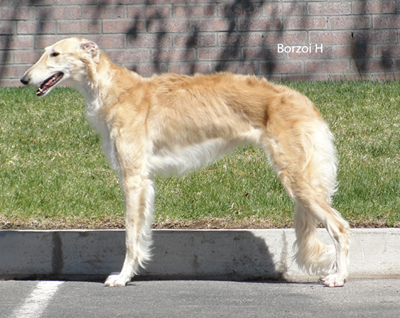 |
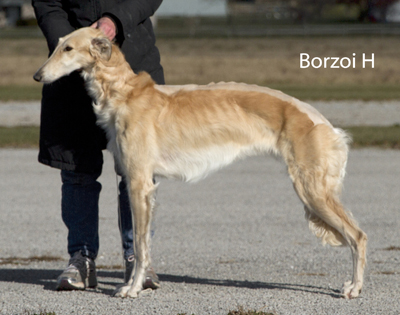 |
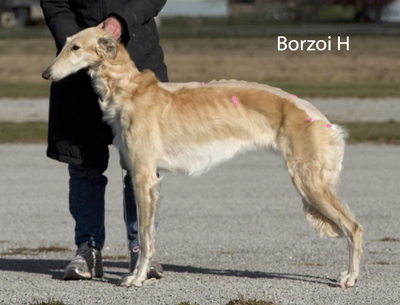 |
| back=17cm, loin=36cm, croup=19cm. Croup angle: from loin =156, from vertical =62 speed=51.64 ft/sec |
H has a slightly more bounding gallop. She has highest loin/back ration in the study and total range of motion. She is able to move her pelvis from vertical at contraction to past horizontal - creating a slight v at the lumbo-sacral junction. The length of loin allows for a greater "push" from the rear legs. |
|
|
|
|
|
|
back=20cm, loin=36.5cm, croup=21.5 cm croup angle: from loin=146, from vertical=55 speed=51.43 ft/sec |
A has a lower stronger style gallop and actually uses some of her back vertebrae along with the loin vertebrae to create more rear force. |
|
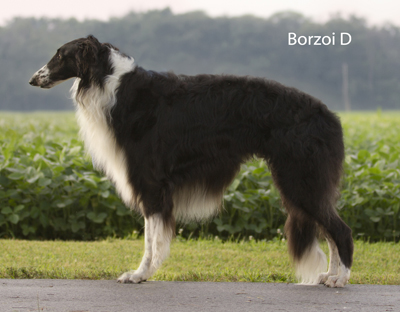 |
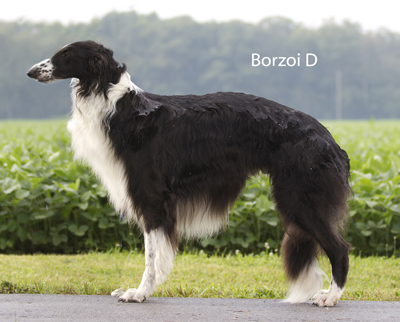 |
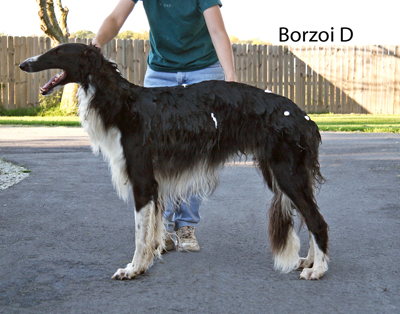 |
||
| back=19.5cm, loin=39cm, croup=20.5cm croup angle: from loin=146 from vertical=51 speed=51.30 ft/sec | D has a smooth open gallop. He uses his long loin to move his pelvis from completely vertical to completely horizontal creating push to the rear legs |
|
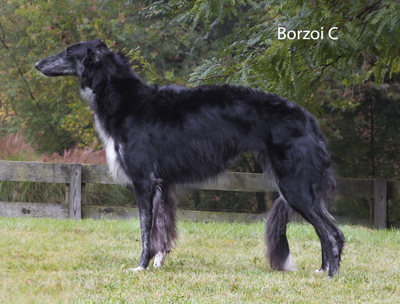 |
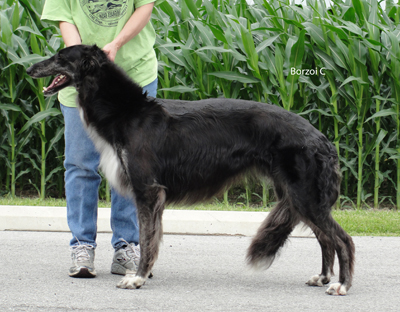 |
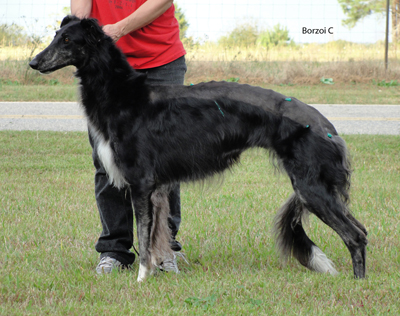 |
||
| back=18.5cm, loin=37.5cm, croup=22.5cm croup angle: from loin 148, from vertical=54 speed= 51.22 ft/sec | C is a bit short on leg, but has the smoothest gallop in the study and makes full use of her long loin and even transitions to the back & croup to create a pelvis that goes from vertical to beyond horizontal creating a slight v at the lumbo-sacral junction. C has an 8th lumbar vertebra. |
|
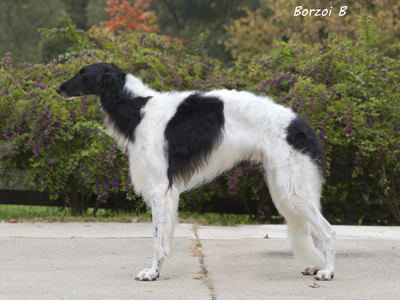 |
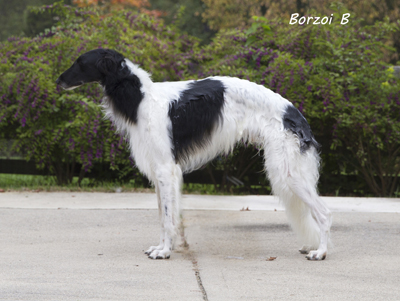 |
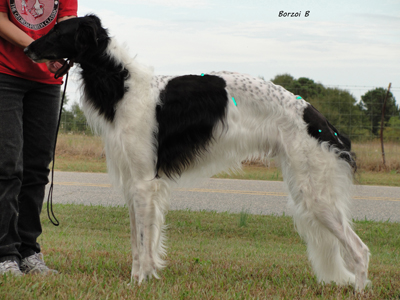 |
|
| back=21.5cm, loin=39cm, croup=21.5cm croup angle: from loin 152, from vertical=50 speed=50.76 ft/sec | B has a vertebral fusion at T10-T11 and rather an abrupt fall away from his arch to his pelvis. But still has good flexibitity to his loin. At a gallop he stretches his legs further apart than the other dogs in this study as a compensation. |
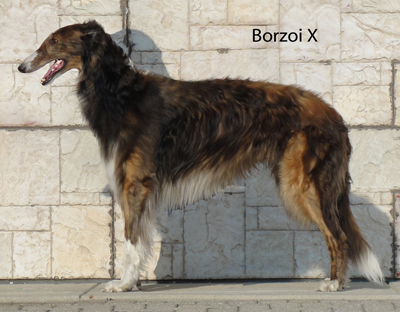 |
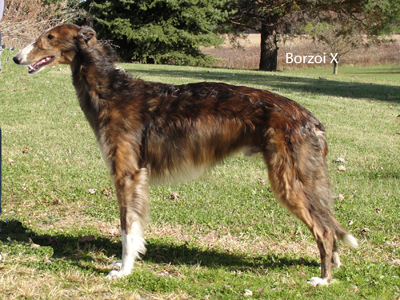 |
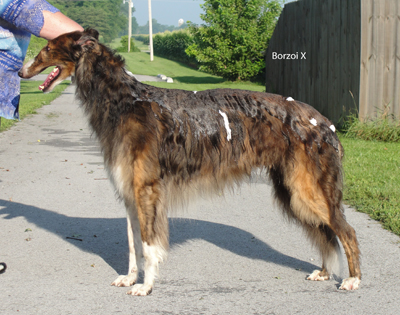 |
|
| back=19.5cm, loin =38.5cm, croup= 21.5cm croup angle: from loin 155, from vertical=62 speed= 49.77 ft/sec | X has a flatter loin and croup. His reasonable length of loin and smooth transitions give him good extension but his coil phase is not as tight as the faster hounds, so his hind legs do not land as far forward. |
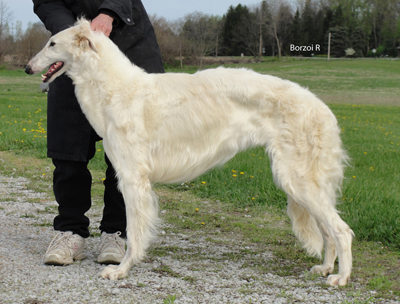 |
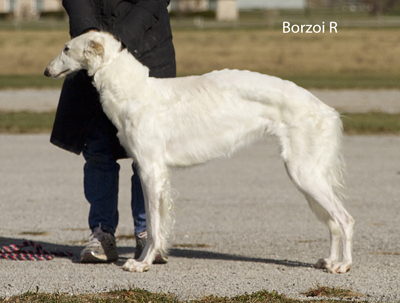 |
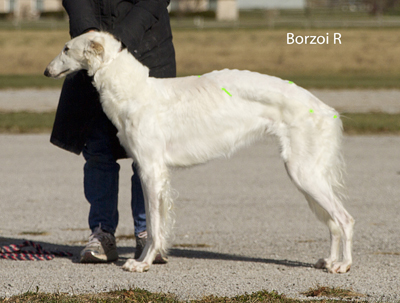 |
|
| back=19.5cm, loin=34.5cm, croup=20 cm croup angle: from loin 156, from vertical 52 speed= 49.03 ft/sec | R has a more bounding gallop with good use of her contraction phase as well as good hyperextention of her pelvis. However she has two vertebrae fusions at T10, T11, T12 that does not allow her to utilize her loin from the anticline through the peak of the rise. |
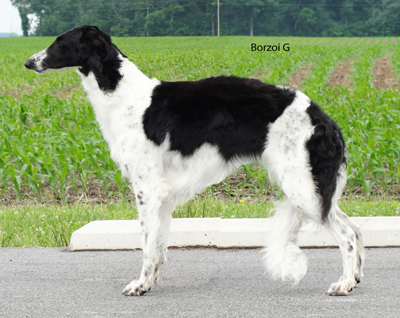 |
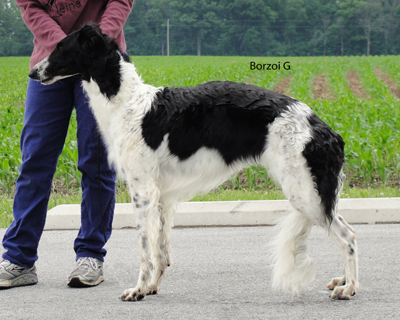 |
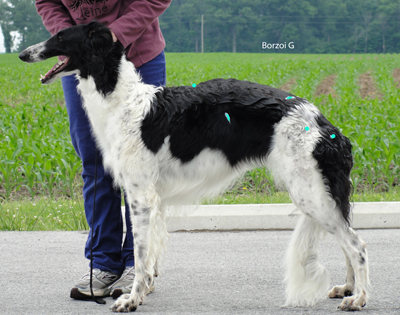 |
|
| back= 22 cm, loin=30 cm, croup=19 cm croup angle from loin=152, from level = 50 speed= 48.59 ft/sec | G has a longer back to shorter loin. She has no structural abnormalities so the range of motion evident in her gallop is complete, but her short loin does not create adequate force to the rear limbs to create great speed. |
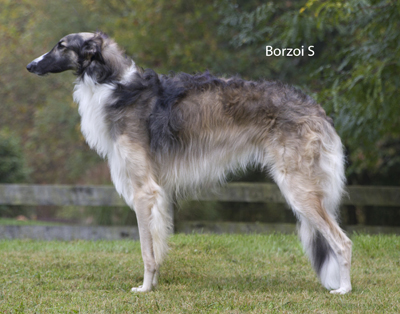 |
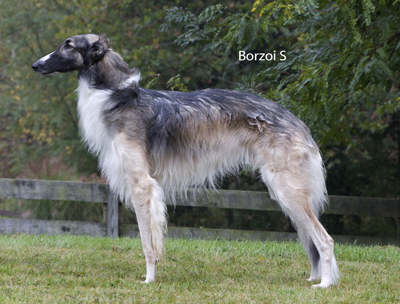 |
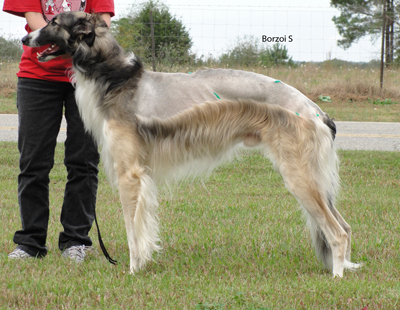 |
|
| back=22.5 cm, loin=34.5cm, croup 19 cm croup angle from loin =140, from vertical=46 speed=46.16 ft/sec | S has a fairly short loin to back length. His poor speed is greatly exacerbated by having a lateral curve to his pelvis. This conformation puts the hip joint underneath the dog rather than behind the dog thus limiting his rear leg extension. Notice the more triangular position of the marks at iliac crest, greater trocanter and ischiatic tuberocity than in the faster hounds. |
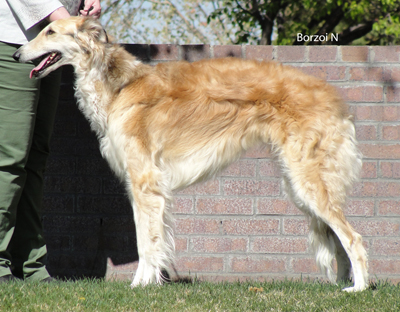 |
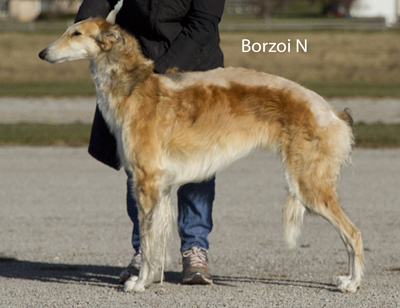 |
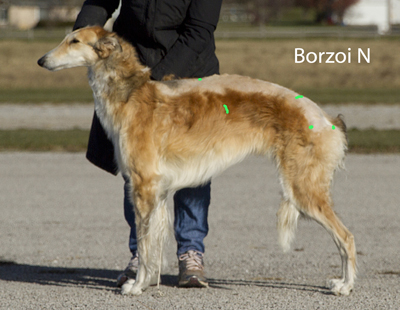 |
|
| back=20.5cm, loin=35cm, croup=18cm croup angle from loin=144, from vertical=52 speed= 46.02 ft/sec | N has a better lion/ back ratio than G & S, but has such an extreme forward set to her hip joint that she cannot extend her rear enough for speed. Notice how low her hind feet stay toward the ground at extension. Be sure to notice what a wide triangle her pelvic marks make. |
Acceleration: Fastest to Slowest
Notice that each of these borzoi uses the same foot positions and timing to start their gallop: crouch, reaching the front forward separately, both hind legs landing at the same time for the first two strides - then gradually separating as the hound moves from an acceleration gallop to a full gallop. When turning sharply as well as starting from a standstill, hounds move in an acceleration gallop. The bitches had quicker acceleration than the males - in keeping with the common belief that bitches are "faster" than the boys although they do not have faster full speed.
|
|
|
|
|
back=20cm, loin=36.5cm, croup=21.5 cm croup angle: from loin=146, from vertical=55 acceleration speed= 40.26 ft/sec |
A starts with a crouched position and stays low until about 8 strides out. The angle to her croup and flexibility of her back & loin are evident immediately to create a faster acceleration. |
 |
 |
 |
| back=18.5cm, loin=37.5cm, croup=22.5cm croup angle: from loin 148, from vertical=54 acceleration speed= 40.15 ft/sec |
C has a similar acceleration to A but uses her longer loin more than her back. Also notice the similarity of the croup. |
 |
 |
 |
| back=17cm, loin=36cm, croup=19cm. Croup angle: from loin =146, from vertical =56 acceleration speed = 39.58 ft/sec |
H slips a bit in the front getting started but still has quite a quick acceleration. Her transition from crouched start transition to more full speed is more dramatic than A & C, but notice their croup angles are nearly identical. |
 |
 |
 |
| back= 22 cm, loin=30 cm, croup=19 cm croup angle from loin=152, from level = 50 acceleration speed= 38.35 ft/sec |
G's short loin has a less dramatic impact on acceleration than on full speed. |
 |
 |
 |
| back=19.5cm, loin=39cm, croup=20.5cm croup angle: from loin=146 from vertical=51 acceleration speed= 38.29 ft/sec |
D has the fastest acceleration of the males. Notice his croup angle is similar to A,C & H. D develops the v at his loin/croup earlier than any of the other study dogs. |
 |
 |
 |
| back=22.5 cm, loin=34.5cm, croup 19 cm croup angle from loin =140, from vertical=46 acceleration speed= 38.16 ft/sec |
S's set under rear due to his c shaped croup does not have as negative an impact on his acceleration gallop as on his full speed gallop. |
 |
 |
 |
| back=21.5cm, loin=39cm, croup=21.5cm croup angle: from loin 152, from vertical=50 acceleration speed= 38.14 ft/sec |
 |
 |
 |
| back=19.5cm, loin =38.5cm, croup= 21.5cm croup angle: from loin 155, from vertical=62 acceleration speed =36.47 ft/sec |
X's flatter more horizontal croup angle gives poor acceleration. |
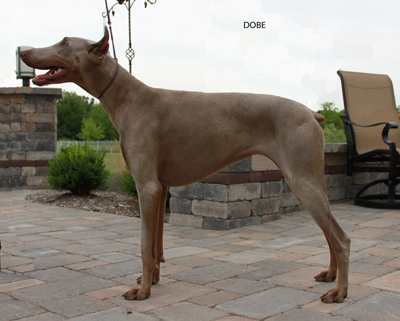 |
|
| back=21cm, loin=23cm, croup=18 cm croup angle from loin =139, from vertical=50 full speed = 41.86 ft/sec acceleration= 35.01 ft/sec |
Two dogs who did not get good starts so were not used in the Acceleration film.
 |
 |
Conclusions:
The borzoi who had both excellent full speed as well as excellent acceleration speed are considered to have correct toplines.

There is no one correct topline. Instead, there exists a range of correct toplines, which must include a short back and long loin and a smooth transition across anticline and croup.
Borzoi are able to overcome minor faults with minimal negative impacts to speed. The more severe the fault, the more difficult it is for the borzoi to compensate.
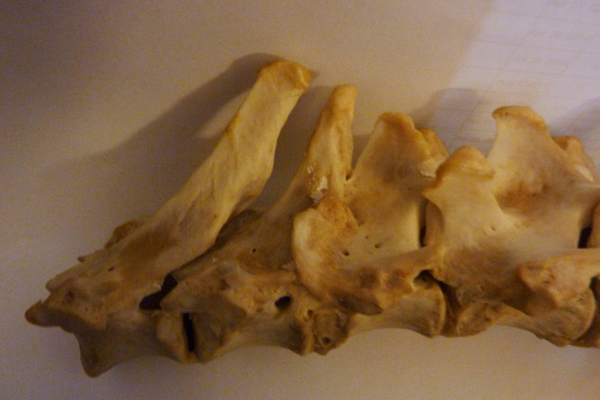
fused T-10 T-11 in a borzoi skeleton
�A pelvis with a C-shaped curve has a dramatic negative impact on speed
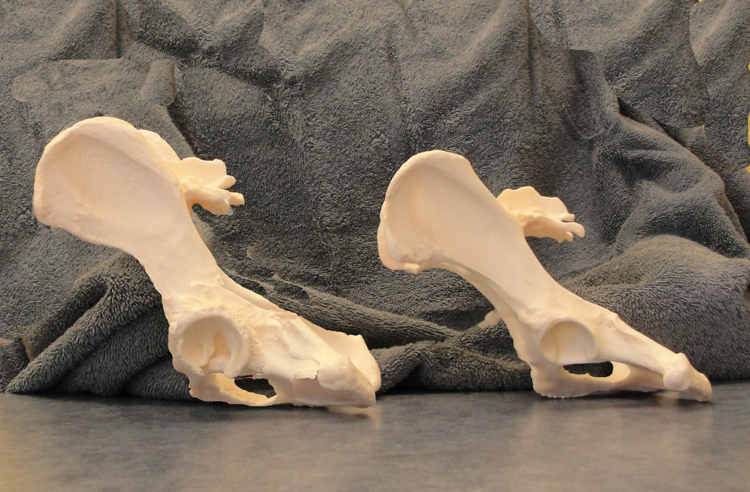
pelvis on the left has a u shape the pelvis on the right is from a normal borzoi
Thank you to all the owners and breeders who have provided borzoi for all three speed studies.
Thank you to the friends and family who came out to help conduct the studies.
Thank you to the borzoi, who all had fun participating!
